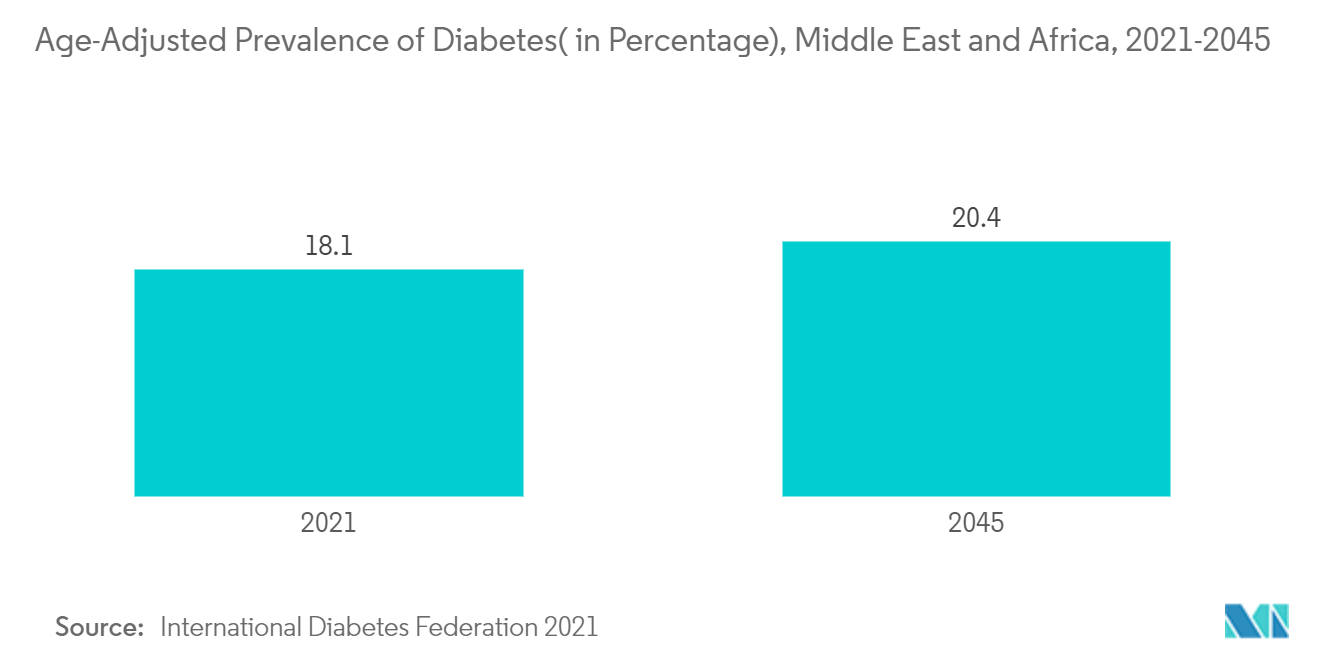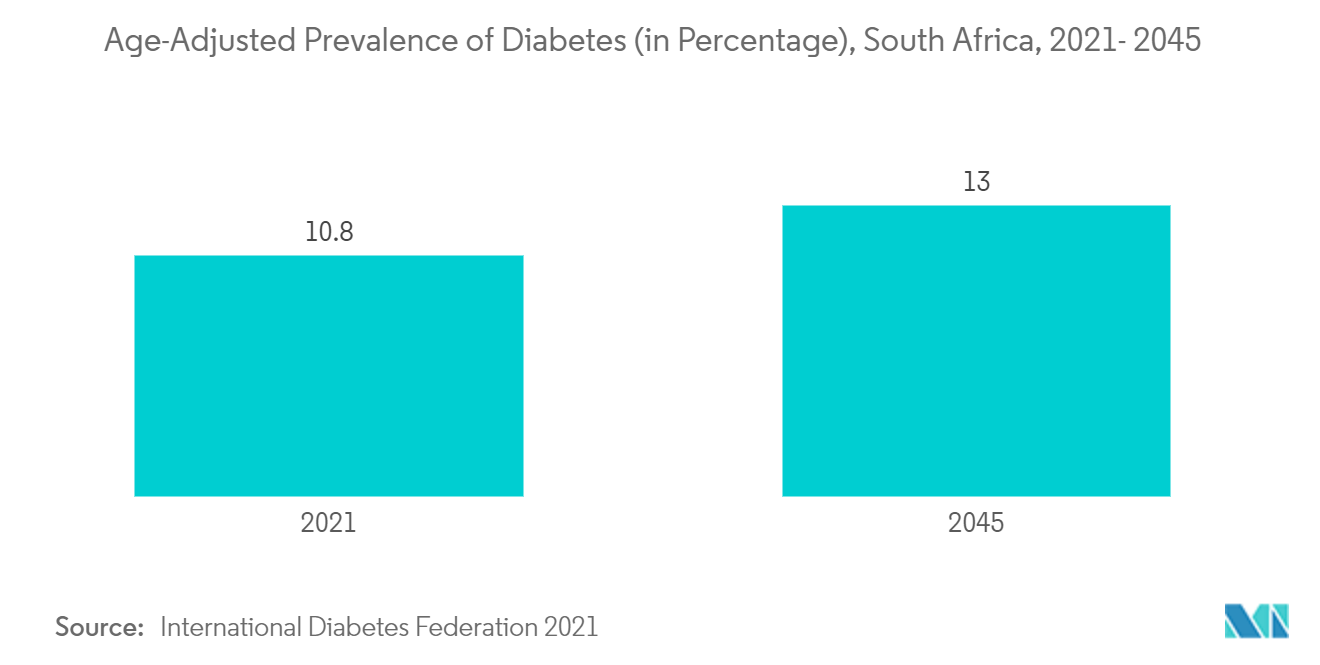Market Trends of Middle East and Africa Patient Monitoring Industry
This section covers the major market trends shaping the MEA Patient Monitoring Market according to our research experts:
Hemodynamic Monitoring Devices Segment is Expected to Grow Fastest Over the Forecast Period
The key factors propelling the growth of this market are an increase in the number of critically ill geriatric cases, a rise in the prevalence of cardiac disorders and diabetes, and increasing demand for home-based and non-invasive monitoring systems. With the increasing prevalence of cardiovascular diseases and other chronic diseases in the region, market growth also increases. As per the International Diabetes Federation 10th Edition 2021, 803.4 (in 1,000s) people were suffering from diabetes in 2021 in Kuwait, and the number is estimated to reach 1,051.4 (in 1,000s) by the year 2030 and 1,267.4 by 2050. Similarly, per the same source, 990.9 (in 1,000s) people were suffering from diabetes in 2021 in the United Arab Emirates and the number is estimated to reach 1,177.5 (in 1,000s) by the year 2030 and 1,325.8 by 2050. Thus, with the increasing burden of diabetes, the demand for healthcare management apps for managing and controlling diabetes is increasing which is expected to fuel the market growth. Also, in The study 'Identifying co-occurrence and clustering of chronic diseases using latent class analysis: cross-sectional findings from SAGE South Africa Wave 2' published in January 2021, the prevalence of coexistence of two or more non-communicable diseases (NCDs) was 21% in the significantly high country. Thus, the growing burden of chronic diseases in the country is expected to increase the demand for hemodynamic monitoring devices.
Factors such as technological advancements in hemodynamic monitoring systems, increasing research into hemodynamic monitoring systems further boost the market.

South Africa is Expected to Dominate the Middle East and Africa Patient Monitoring Market Over the Forecast Period
South Africa is expected to dominate the market during the forecast period due to the increasing demand for patient monitoring as there was a rise in the geriatric population and the prevalence of chronic diseases.
For instance, according to the 2022 statistics published by the United Nations Population Fund, in South Africa, a large proportion of the living population is aged 15-64 and accounts for 66% in 2022. In addition, as per the same source, 6% of the population is aged 65 years and above in 2022.
Also, according to International Diabetes Federation, in November 2021, titled 'With 1 in 9 adults living with diabetes, South Africa has highest diabetes prevalence in Africa', the highest rate of diabetes prevalence in Africa has been recorded in South Africa, at 11.3% in 2020.
Thus, the rising geriatric populations are more prone to develop chronic diseases which require proper monitoring and diagnosis which is expected to increase the adoption of patient monitoring.


